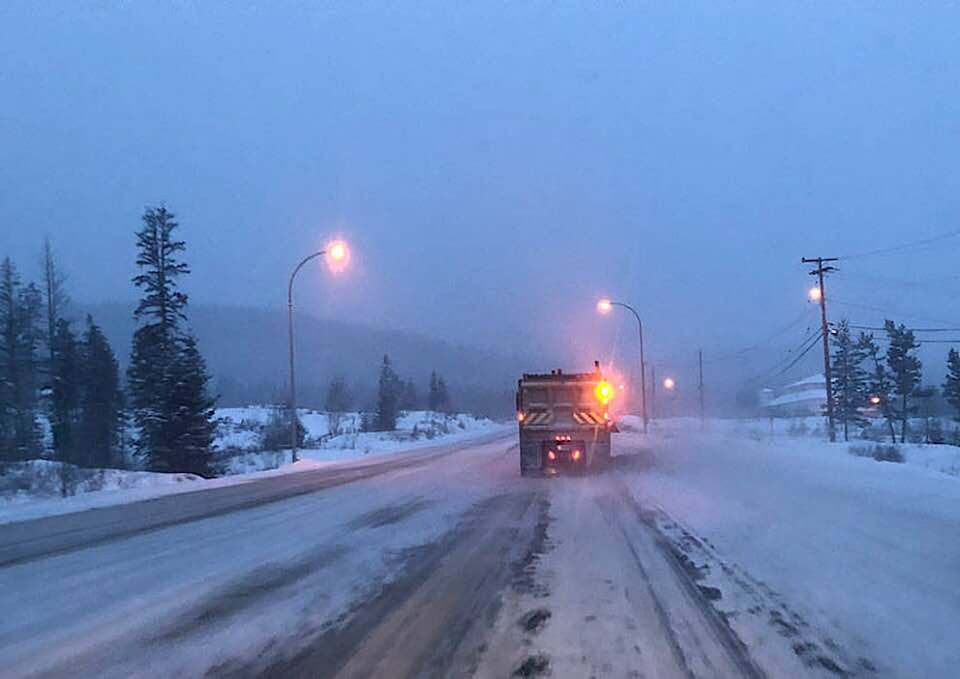The snow has been late so far this year, but that doesn’t mean it’s not coming. And it certainly doesn’t mean that Dawson Road Road Maintenance (formerly Interior Roads) isn’t preparing for the snowfall.
“Salt is purchased ahead of winter and stockpiled in locations throughout our service areas to supply road maintenance operations as needed. Generally, we stockpile enough salt for more than one season’s use to ensure we have enough, no matter the weather,” said Robert Koopmans, director of communications.
Of course, how much of it is applied is dependent on the weather.
The salt is also used to mix anti-icing brine. The anti-icing brine is applied to roads as a measure to prevent ice and snow build-up ahead of a storm. However, it can only be used at temperatures above -9C. At temperatures below that, solid salt must be used.
As for how the company prioritizes their routes, it’s usually up to the Ministry of Transportation and Infrastructure, who classify the roadways according to type (pavement, gravel, etc.) and how much traffic the route sees.
“Main highways (Highway 97, for example) are Class A roads. Residential roads with less traffic are likely Class B or C roads. Road maintenance priorities are determined according to the road classes, local weather and road conditions and feedback from the public. School bus routes are always given high priority, even if they are a lesser road class. Our crews use local knowledge and awareness to try to provide maintenance that responds to local traffic needs,” said Koopmans.
Class A roadways typically garner faster responses to snow removal and other winter roadway maintenance, as opposed to Class C or D roadways.
For example, according to the province’s Highway Maintenance Specifications, Class A roadways with black ice prone locations, intersections and incident prone locations should have a response in 60 minutes for routine maintenance, while a Class D roadway is expected to have a response within six hours.
For maximum winter accumulations, a Class A roadway with one lane in each direction is allowed to accumulate four centimetres before a response, while a Class E with one lane in each direction would have 25 centimetres before a response is warranted.
The Highway Maintenance Specifications can be viewed on the provincial government’s website.
Koopmans said that building anti-icing storage containers are fairly routine, and if they are building a new one for brine, it was most likely due as a replacement.
However, there is a new development that Dawson Road Maintenance will be rolling out this season.
“The biggest development this season is the inclusion of GPS into trucks, which will allow us to more precisely track vehicle locations (in real-time) and performance against the Ministry’s standards,” he said.
Dawson Road Maintenance has 43 plow trucks and 13 graders active in the South Cariboo.
newsroom@100milefreepress.net
Like us on Facebook and follow us on Twitter.
